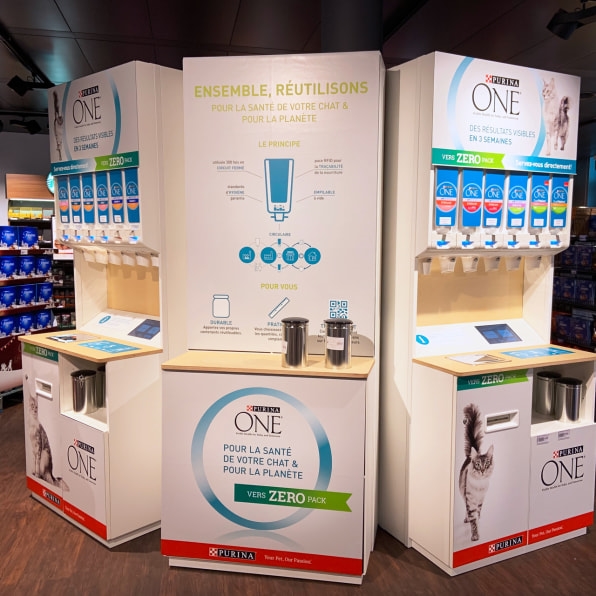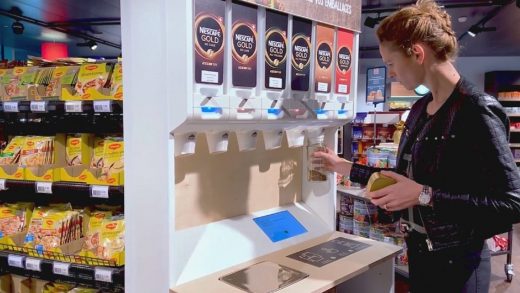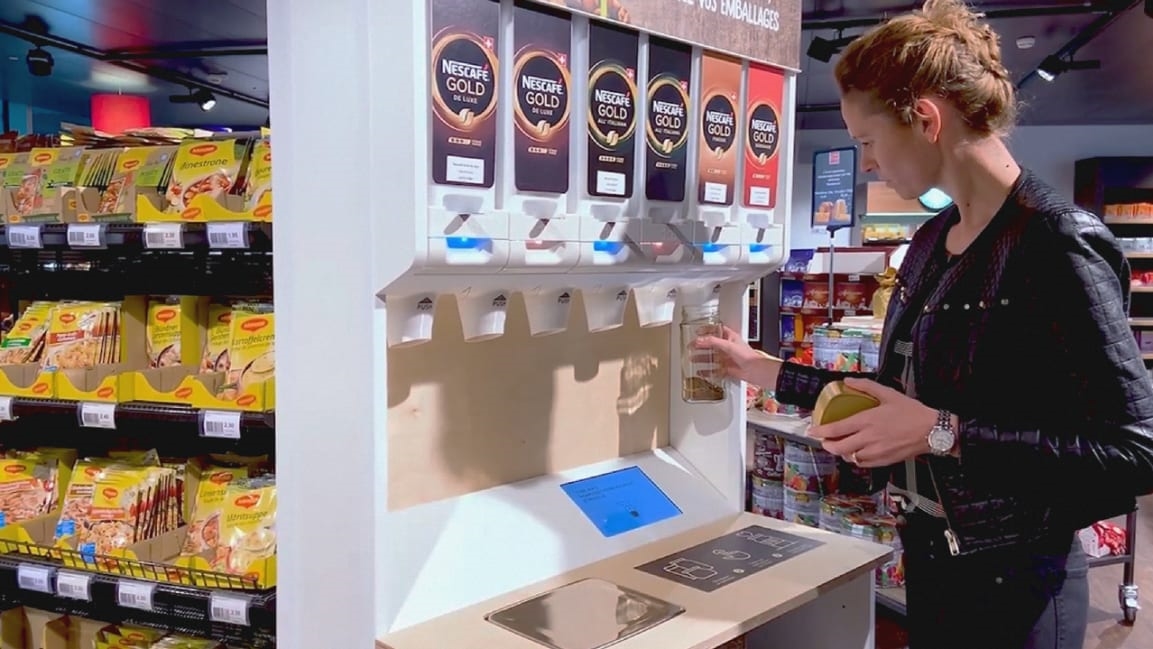Nestlé has new refill stations to help shoppers ditch single-use packaging
At some stores in Switzerland, it’s now possible to buy Purina cat food and Nescafé coffee from new refill stations instead of in single-use packaging. Nestlé, which owns both brands, is testing new technology as part of its broader goal to cut packaging waste.
The refill stations, from a startup called Miwa (short for “minimum waste”), attempt to solve some of the challenges of traditional bulk bins. “These particular dispensers are novel because they incorporate smart technology and closed canisters, which allows us to ensure product safety, hygiene, and also guarantees the freshness and full traceability of our products,” says Hélène Lanctuit, R&D packaging lead at Nestlé.

The products arrive at stores in large sealed capsules, encoded with information from the factory, that are placed in refill dispensers. When someone wants to buy coffee, they can use a reusable “smart cup” designed for the system; instead of scooping out product and weighing it, as in a bulk bin, the dispenser automatically measures out the product directly into the cup. “The capsule gets opened by a special electronic control dispenser, and at that moment, you also use the data from the capsule to actually provide the shopper with all the information about the product,” says Petr Báca, founder and CEO of Miwa.
Through a system app, shoppers can pay for the product on their phone immediately after filling the container, and then look at the nutrition information and expiration dates when they get home. The container can also send alerts about expiration dates to help avoid food waste.
Convenience has been a barrier for consumers using refill stations in the past, he says, but the new system makes the process easier. It also has advantages for brands. “As a producer, you can see in real time what you are selling,” he says. The traceable capsules that go to stores can also help reduce waste in the supply chain. But it will be critical, he says, for big brands to adopt these platforms, rather than just niche sustainable brands, in order for consumers to shift away from single-use packaging at a large scale. Refill stations also have to become more widely available. “If you can shop bulk only in special stores, then, of course, you don’t really get the volumes, or get people excited about it as a sort of new standard,” he says.
So the startup is working with several large brands as companies work to find solutions to single-use packaging, especially plastic. Nestlé, which aims to make all of its packaging reusable or recyclable by 2025, also plans to cut its use of virgin plastic by a third. Refill systems aren’t the only answer, Lanctuit says, and the company is also exploring alternatives like compostable packaging. But for some products, refillable containers make sense. The company is also part of Loop, a home delivery service with everyday products (like Haagen-Dazs ice cream) in reusable packaging that gets sent back to a facility for cleaning and reuse. It’s also testing a water dispenser as an alternative for bottled water. But for products like cat food and coffee, there’s no reason that they need to arrive in packages that quickly end up in the trash.
In an initial four-month pilot in Switzerland, Nestlé said that the new refill stations were enough of a success that they’re now rolling them out in stores across the country, where they’ll continue to study ways to improve the customer experience and evaluate how much the system can reduce waste. One external study found that the Miwa system cut the overall environmental impact of packaging by more than two-thirds.
(47)



